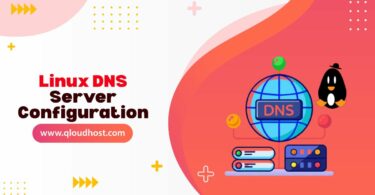Retail price trackers, brand guardians, and ad verification engines all live off unbroken data flows. The pipelines supplying them are dependent on stably assigned IP addresses. When linking is shaky, metrics are wobbly, and strategies fail. Continuity is an unseen differentiator for enterprises that rely on enterprise‑grade IP pools.
It is common for multiple teams to buy proxies following costly setbacks that allow them to realize internal networks are not sufficient. Consistency, not raw volume, in the eyes of the market analysts, is more valuable.
The Hidden Costs of Unstable IPs
Very few balance sheets have a line for connection losses, but they quietly mill away at budgets. Each unsuccessful request generates another, increasing transaction costs and the use of server resources. Data ingestion workflows jam up, and engineers turn to late-night patches rather than product development.
Marketing dashboards fill with spotty numbers, propelling teams to erroneous conclusions about demand or the pricing of competitors. Security investigators pursuing contraband listings see session tokens time out mid-crawl and have to restart entire chains of evidence.
Unstable IP access will bloat cloud bills, slow releases, and erode analyst trust. Sometimes, finance teams notice when month‑end reports reveal unexpected bandwidth spikes. The prevention of instability, therefore, is an economic strategy, not just a technological one.
Core Stability Metrics: Uptime, Consistency, Latency
Stability is measurable, not mystical. Uptime indicates the percentage of minutes an endpoint responds without error. Serious providers keep numbers above 99.9%. Consistency monitors different sessions and daily rotations’ response variation.
Low jitter guarantees that similar queries result in comparable returns, and this is essential in price monitoring models. Latency measures the duration for which a request is taken out, and the response comes in, as it molds the crawler throughput. Even a fifty-millisecond saving adds up to hours saved during large sweeps of a catalog.
These three measurements taken together create an easy scorecard for distinguishing hobby services from infrastructures for enterprise workloads. Further, redundancy scattered across independent ASN paths cushions numbers from the upstream transit hiccups.
When to Buy Proxies: Weighing Stability Against DIY
Internal proxy clusters promise independence at the expense of constant upkeep. When residential sources disappear or data centers change owners, rotation scripts crash. Legal review teams must validate every acquisition of a subnet to avoid getting gray‑market addresses.
Capital outflow for IP leases are related linearly; success ratios plateau under throttling pressure. Once a certain traffic level is reached, most technology departments realize that it is cheaper and safer to buy proxies from specialists.
External providers spread their amortization of pool expansion over many clients, invest in global redundancy, and offer audited compliance documentation. Outsourcing stability allows developers to concentrate on algorithms, not network firefighting.
Location Targeting & Compliance: Getting Geo‑Specific Data Right
Business logic can be very geography-dependent. When testing retail prices, businesses need to sample stores in the customer’s country, city, or even neighborhood. Sales checks are dependent on local creatives, who are also locked down to only specific postal codes. Stable region-locked addresses make sure the same request comes from the same place each time.
Without that certainty, what is scraped misaligns with reality and distorts revenue forecasting. Compliance is another layer. Regulations like the GDPR or CCPA require the transparent processing of personal data, such as IP logs.
Established vendors also have stringent data-treatment workflows and can help enterprises avoid damaging fines and meet disclosure requirements. Also, proper regional sampling helps insulate brands against charges of deceptive pricing.
Usage Limits & Rotation Policies: Guardrails for Success
Stability is more than just uptime; it’s consistent bounds. Most providers are capping the number of sessions or request volume. Explicit terms mean engineering teams can tune thread count and crawl schedules with confidence. In random throttling, on the other hand, conservative settings are enforced, which underuses infrastructure and postpones insights.
Rotation cadence matters as well. The high-frequency swaps do bypass detection, but can cause a break in polling that is too long. Sticky options preserve a single address for minutes or hours and notify of login states.
An experienced provider provides rotation rules using simple words and gives them out regularly so that there is no need to speculate. Transparent dashboards offer planners the capability to predict usage seasonally, preventing surprise charges.
Evaluating Providers: A Pragmatic Checklist
Picking an IP provider is like how vendor sourcing happens in any other critical infrastructure industry. Service-level agreements should define minimum uptimes, timeframes for maintenance, and routes for response escalation.
Transparency reporting dashboards provide operations with visibility into failures on the spot rather than general apologies. Proof-of-concept testing should be well-defined with sample scenarios of production-type traffic running through the sample paths. When looking for advertised endpoints, engineering departments often plot latency heatmaps across cities to ensure those endpoints are present.
Then, there’s support responsiveness, which brings the picture to completion. Such a specialist who is willing to troubleshoot CAPTCHA spikes at midnight is worth more than terabytes of theoretical bandwidth.
Stable Foundations Ensure Trustworthy Insights
Most data pipelines do not crash in one significant outage. Instead, they eat away at thousands of small losses that will not be observed until forecasts miss targets. A reliable IP provider seals those leaks by providing maintenance of sessions without any interruption, predictable rotation, and verifiable compliance.
Companies that buy proxies from reliable networks win back developer hours lost in connection repairs. They hasten release cycles, believing every scrape to be real, not the projection of rate limits. Competitive intelligence, brand protection, and digital advertising are all provided with the same robust backbone.
Stability, changes from background fear to strategic things. Smart decisions today lead to cleaner data tomorrow and put entire teams on a course for higher growth.





Leave a Comment